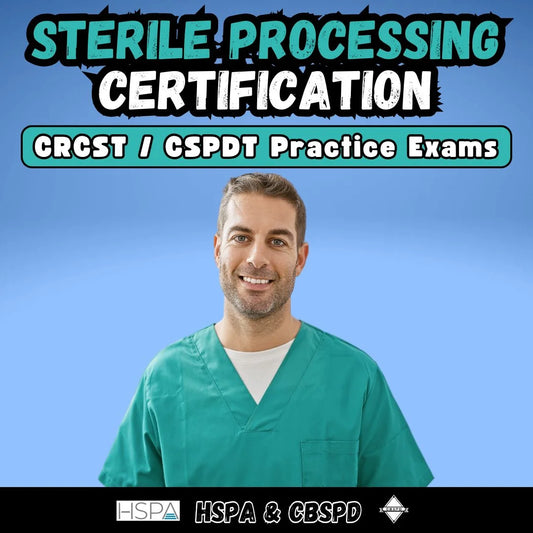Ethylene Oxide: Unveiling the Microbial Eradicator

In the realm of medical device sterilization, ethylene oxide (EO) has proven to be a powerful and versatile method for eliminating microorganisms. EO is a gaseous agent widely used to sterilize heat- and moisture-sensitive items, such as surgical instruments, electronic devices, and certain types of plastics. In this article, we delve into the mechanisms by which ethylene oxide kills microorganisms, highlighting its efficacy and importance in maintaining patient safety.
Understanding Ethylene Oxide Sterilization
Ethylene oxide sterilization involves a multi-step process that allows the gas to penetrate, interact with, and eliminate microorganisms. The key steps in EO sterilization are as follows:
Gas Penetration: Ethylene oxide gas has excellent penetration capabilities, enabling it to reach intricate and hard-to-reach areas of medical devices. This is particularly important for devices with complex structures or those composed of porous materials that may harbor microorganisms.
Alkylation: The primary mechanism by which ethylene oxide kills microorganisms is through a process known as alkylation. EO molecules react with various cellular components, including proteins, nucleic acids, and enzymes within microorganisms. This reaction disrupts the structural integrity and essential functions of these components, rendering microorganisms unable to survive or replicate.
DNA Damage: Ethylene oxide has a strong affinity for DNA. Upon exposure to EO, the gas interacts with and damages the genetic material of microorganisms. This damage inhibits the microorganisms' ability to reproduce and carry out vital genetic processes, leading to their demise.
Protein Denaturation: EO's alkylation process also affects microbial proteins. By chemically modifying protein structures, ethylene oxide causes protein denaturation. This disruption hinders the proper folding and functioning of proteins, ultimately leading to the inactivation of enzymes and other essential microbial components.
Microbial Inactivation: The combined effects of alkylation, DNA damage, and protein denaturation result in the inactivation of microorganisms. Their ability to metabolize, grow, and cause infection is significantly impeded, rendering them destroyed and harmless.
Factors Affecting Ethylene Oxide Sterilization Efficacy
Several factors influence the efficacy of ethylene oxide sterilization:
Gas Concentration: The concentration of ethylene oxide within the sterilization chamber affects its antimicrobial activity. Higher concentrations allow for more efficient and rapid microbial inactivation. However, achieving the right balance is crucial to prevent damage to sensitive materials.
Exposure Time: Sufficient exposure time to ethylene oxide is necessary to ensure thorough microbial eradication. Different microorganisms have varying levels of resistance, with spores typically being more resistant to EO. Longer exposure times may be required for effective sterilization in such cases.
Temperature and Humidity: Ethylene oxide sterilization often occurs at elevated temperatures and controlled humidity levels. These parameters optimize the gas's activity and penetration while minimizing the risk of condensation that can compromise the process.
Aeration: Following the sterilization cycle, aeration, or degassing, is a critical step to remove residual EO gas from the sterilized items. Aeration helps eliminate any potential toxicity or residue, ensuring the safety of the sterilized items before their use.
Conclusion
Ethylene oxide sterilization stands as a vital method for effectively eliminating microorganisms from heat- and moisture-sensitive medical devices especially flexible endoscopes. Through the process of alkylation, DNA damage, and protein denaturation, ethylene oxide eradicates microorganisms by disrupting their vital cellular components. Understanding the mechanisms behind EO sterilization highlights its efficacy and importance in safeguarding patient safety and preventing infections.
While ethylene oxide sterilization is a highly effective method, it requires strict adherence and safety precautions. EO is highly toxic and is a mutagen, teratogen, and carcinogen. It may also cause birth defects to unborn children. Ensure you are following all safety protocols and regulations from OSHA around the use of EO.
Share
Let customers speak for us
from 241 reviewsI took the practice test and I got a 91% on my certification exam!!
This course was the extra boost that I needed in order be confident in passing the exam. Thank you for all the information provided. I even refer to your notes while working.
Very helpful to me I can study any where at my own pace and low cost than going to school...I'm glad that there is something like this online to help anyone who want to pursue their career as a sterile processing tech.
I loved it, it’s very informative and the questions are great, it’s a great resource to purchase if you want to prepare for your certification exam!
I’ve really enjoyed this course so far. It delivers the information in a straightforward, digestible way. The Sterile Guy has compiled a highly effective program. Thanks very much from one highly satisfied customer!
The practice exams are detailed and easy to navigate. Brandon continues to show his passion in this industry by sharing his knowledge with up-and-coming techs. I also recommend investing in his flashcards. It has helped me greatly. Thank you, Brandon!,
These practice quizzes really helped me get the hang of answering questions related to instruments and the processes of preparing them! I even bought them twice cause I ran out of time lol. Super helpful!
I recently completed the Sterile Processing Guy course online and was extremely impressed. The content was clear, well-organized, and easy to follow. It helped me better understand important concepts like decontamination, disinfection, and sterilization. I appreciated how practical and informative the lessons were, it definitely made studying for certification feel more manageable. I highly recommend this course to anyone pursuing a career in sterile processing!
I won’t lie, I failed the first time around. So I decided to buy this practice test and I passed with flying colors my second go. Highly recommend to anyone interested in the CER, it helped a lot!
The flash card quality is amazing! Bravo sir! The card quality is way above average, questions are great! I’m still learning, utilizing these cards and your practice tests. Thanks for all the info!
I passed the CRCST exam. Taking reg sterile guy practice test over and over definitely helped get the job done.
This certification prep course is a must. Great videos with a lot of information and plenty of of practice exams.
These flashcards are so helpful and well put together. Highly recommend!
I'm really happy that I purchased the SP practice exam. I love how if you answer the question incorrectly, the correct answer will include the page number of the text book to find the answer. The questions are literally based on the textbook. I suggested "The Sterile Processing Guy" to my friend that is studying for the exam as well.








